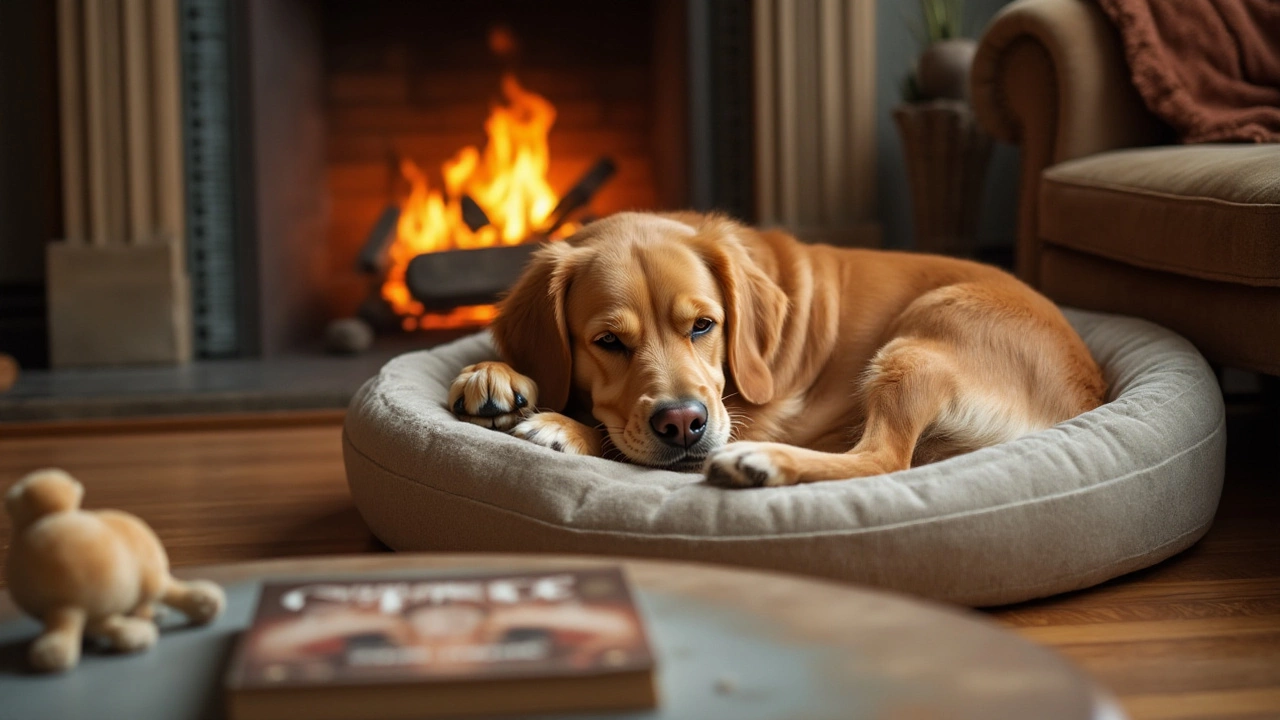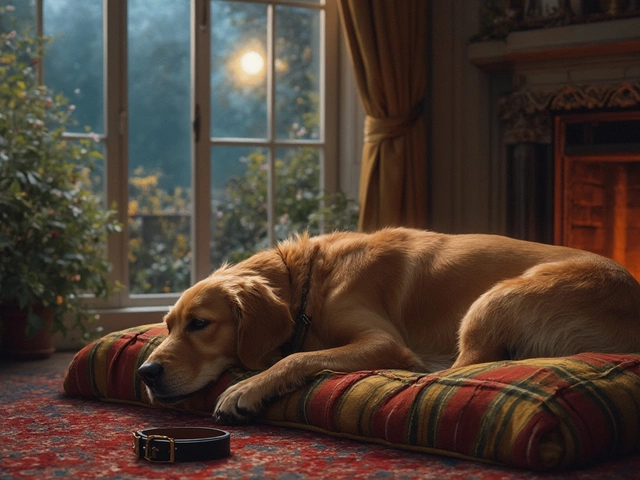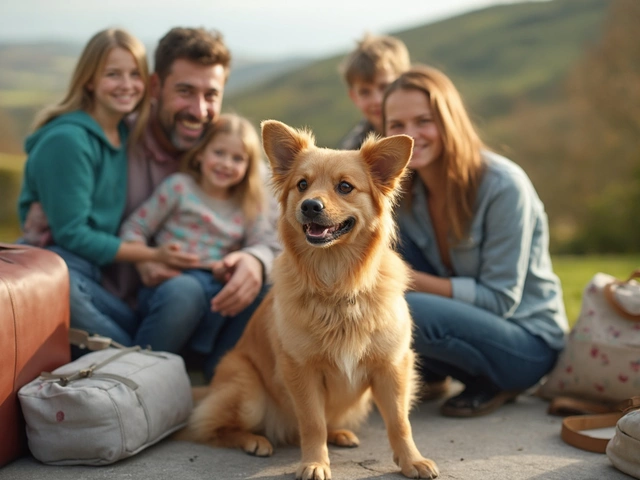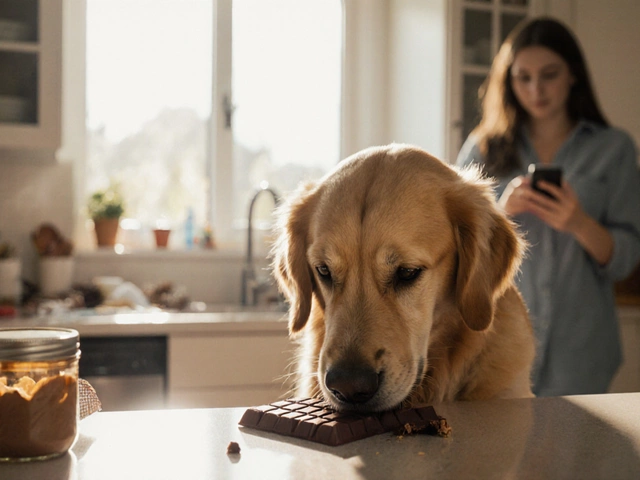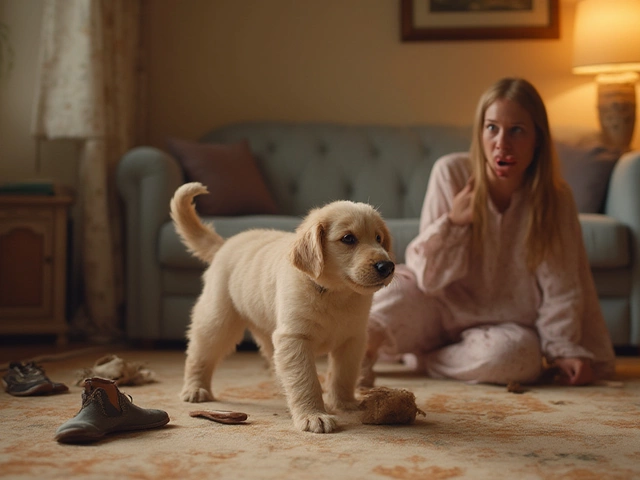Have you ever caught your dog curling up tightly in a ball as they seek the perfect spot to rest, or stretching out luxuriously, claiming space like they own the place? It's actions like these that make us wonder: Do our furry companions prefer round or square beds?
Just like us, dogs can be habitual creatures when it comes to sleep, often displaying distinct preferences based on how they like to rest. Let's delve into the world of dog beds and unravel the mystery of whether round or square might just be the shape of your pup's dreams.
- Understanding Dog Sleep Habits
- Round vs. Square: What's the Difference?
- Benefits of Round Beds
- Advantages of Square Beds
- How Dogs Choose Their Beds
- Tips on Choosing the Right Bed Shape
Understanding Dog Sleep Habits
When we delve into the world of dog beds, it's crucial to first grasp the intricacies of how our canine friends sleep. Not unlike humans, dogs go through different sleep stages, including REM (rapid eye movement) and deep sleep, which are vital for their health. Every dog has its unique sleep pattern, much of which can be shaped by their age, breed, and environment. Puppies, much like babies, spend a significant portion of their day sleeping—almost 18 to 20 hours—helping them grow and develop. As they transition into adulthood, sleep requirements generally decrease to about 12 to 14 hours a day, although this can vary.
The need for sleep and the way dogs choose to rest is also fascinating. Some pooches are sprawlers, stretching out with no care in the world, while others are curlers who tuck themselves tightly, reminiscent of a spiral-shaped donut. This pose is often instinctual, preserving body heat and protecting vital organs from potential predators. The way a dog sleeps might offer insights into its comfort level in its current surroundings. Dogs with ample space might choose to stretch out, whereas those feeling insecure might opt for a curl-up position.
"Understanding a dog's sleep postures and patterns can give us a window into their sense of security and contentment," says renowned canine behaviorist Sam Davies. Observing these little nuances helps owners provide the ideal sleeping setup for their dogs, right down to choosing between those round beds and square beds."
Dogs in the wild sleep lightly and often in bursts to stay vigilant against threats. Domesticated dogs have adapted over time but still retain some of these inherent habits. Knowing this, you might notice your pet shifting positions frequently, or even waking multiple times at night. It’s not unusual for them to rise, circle their resting spot a few times, and then nestle down again. This circling behavior hails from their wild ancestors who did it to tramp down grass and brush, setting the scene for a cozy bed in nature.
Ultimately, understanding these sleep nuances doesn't just make you a better pet owner; it enhances your relationship with your pet. Providing the right environment can profoundly impact your dog's quality of life, making the quest for the perfect bed shape all the more meaningful. With behavioral observations and a good dose of trial-and-error, pet owners can tailor a sleeping space that supports restful and rejuvenating sleep for their dogs.
Round vs. Square: What's the Difference?
When it comes to choosing between round beds and square beds for your dog, the decision involves more than just aesthetic appeal. Each shape offers unique benefits that cater to different sleeping styles and habits. A dog's natural resting posture offers vital clues about which bed shape might suit them best. Dogs that tend to curl up often push against the corners as if seeking out boundaries, which makes a round bed an ideal choice. These snug circles provide a safe haven, mimicking the comforting feel of a den and enveloping the dog in a warm embrace. On the other hand, dogs that love to sprawl may find the rigid edges of a square bed more accommodating. These beds allow for an even distribution of body weight and ample space for stretching, creating a sense of freedom.
But what else distinguishes these two types of beds? The key lies in mobility and functionality. Round beds often boast a bolster design, which can offer additional neck support and a cozy feel. The circular shape also encourages a nesting behavior, which many dogs find instinctively reassuring. Meanwhile, square beds are usually more versatile when it comes to fitting into household spaces, aligning neatly against walls or corners, and providing a more structured appearance. They often come with a flat design, which makes them especially easy to maintain in terms of cleaning and durable against wear and tear.
The Influence of Material and Design
Material and construction influence your dog's personal comfort and the longevity of the bed. Consider beds made from high-quality, non-toxic materials, whether you opt for round or square. Round beds often come in a variety of materials like plush microfibre or fleece, offering a soft, indulgent feel that invites burrowing. Square beds, commonly designed with canvas or heavy-duty upholstery, focus on robustness and resistance to scratching. Think about weather conditions too. If you live in a cooler climate, your pup might appreciate the added warmth of a plush, round bed, whereas square beds can help keep dogs cool in warmer environments.
Interestingly, design considerations don't end with the shape. The height of the bed impacts both types, giving additional benefits. Sometimes, raising a bed can help avoid drafts and reduces joint pressure by providing firm, even support. In the end, every dog is different, and knowing your pet can make this choice clearer.
As Dr. Janet Crosby, a well-regarded veterinarian, once noted, "Observing a dog’s sleep habits can tell you as much about its personality as it does about its comfort."Paying attention to these subtle nuances could be the difference between a restful night and disturbed sleep.
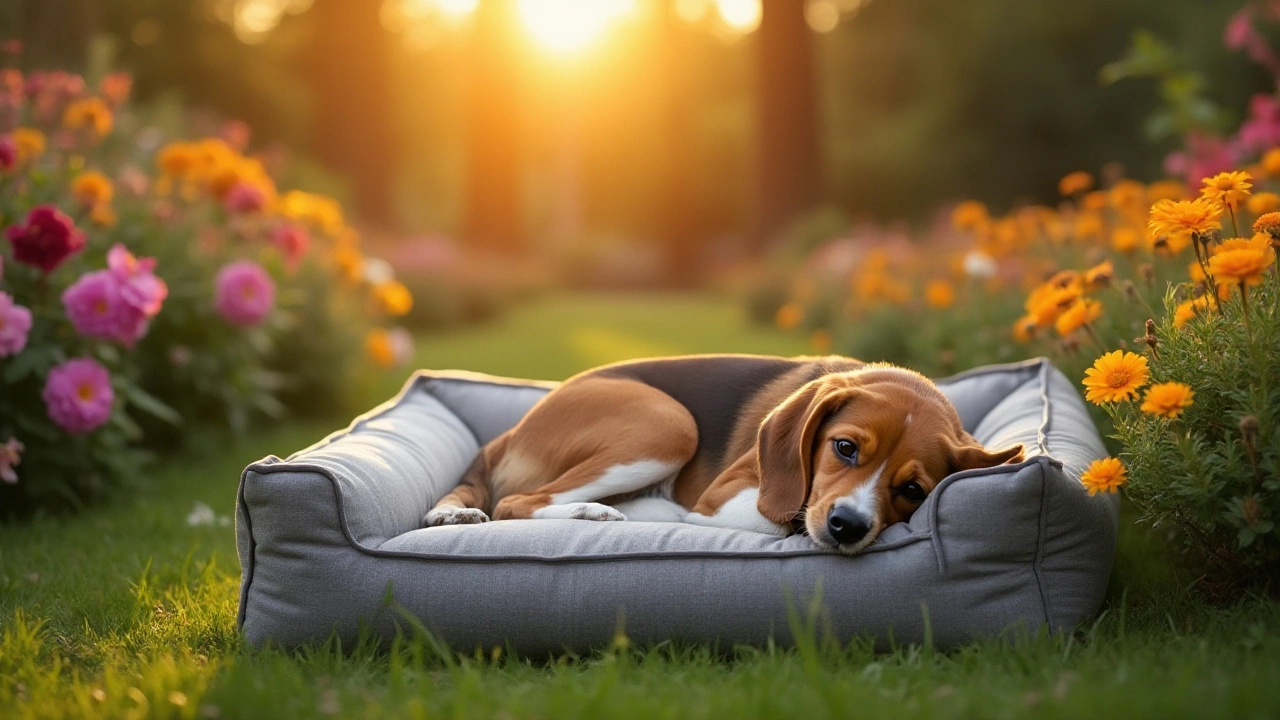
Benefits of Round Beds
When it comes to your dog's sleeping spot, choosing the right shape can make a significant difference in their comfort and restfulness. Round beds, which often resemble cozy doughnuts or inviting nests, are specifically designed to cater to a dog's instinctive sleeping behavior of curling up. This natural position not only conserves warmth on chilly nights but also provides a sense of security, tapping into the 'denning' instinct that their wild ancestors had.
One of the biggest benefits of a round bed is how it supports a dog's spine, allowing them to snuggle up without any edges or corners disrupting their circle of comfort. This is particularly beneficial for smaller dog breeds or older dogs who might be more prone to sensitivity and need that extra cushioning support. The ability to tuck themselves into a circular space can also alleviate tension in their joints, making it an ideal choice for pets suffering from arthritis or similar conditions.
"Dogs tend to gravitate towards curved spaces because it allows them to form a protective ball, reducing exposure while they drift into slumber," says Dr. Emily Harper, a veterinarian specializing in canine behavior.
In terms of material, many round beds incorporate ultra-soft padding and plush fabrics to amplify warmth and cosiness, essential for dogs with thin coats or during colder seasons. The absence of corners in a round design also means a decrease in chewable edges, which could make the bed last longer if your canine companion is prone to gnawing. It's not just about utility, though; aesthetics play a role too. Round beds can easily enhance the decor of your home, offering a pleasing symmetry and minimalistic design that blends seamlessly with various types of interiors.
Moreover, maintaining and cleaning round beds can often be more straightforward, given their streamlined structure. Many come with removable covers that are machine washable, a blessing for pet owners dealing with shedding or occasional accidents. When evaluating your choices, consider that the snugness of a round bed often allows the dog to relate to it more as a 'den,' which might lead to quicker acclimation and lesser anxiety in new environments. So next time when browsing through options for dog beds, think about how a round bed might just be the perfect plush piece your pet has been waiting to curl up in.
Advantages of Square Beds
When it comes to providing your beloved canine with the perfect resting station, you might find a certain allure in the structured design of square beds. These beds, characterized by their neat lines and symmetrical shapes, cater to specific sleeping patterns that some dogs find irresistible. One of the prime benefits of a square bed is how it neatly fits into the corner of a room, making it a space-efficient option for homes where space is a prized commodity. Not only does this design offer a tidy look, but it also offers a sense of security to dogs who favor the feeling of being nestled in a den, like the burrowers they instinctively are.
Another key aspect of square beds is their versatility in accommodating the different sleeping styles of dogs. For those pets who love to sprawl out and take up as much space as possible, a square bed provides ample room for stretching out fully. This can be particularly beneficial for larger breeds or multiple small dogs sharing the same bed. While observing your dog snooze, you'll notice that many enjoy pressing against the solid borders of their bed, and square designs are perfect for providing those satisfying perimeters to nudge against.
According to the American Kennel Club, "Dogs often prefer beds based on how they sleep and their need for a space that can accommodate their favorite sleeping positions."
The structural integrity of square beds can also be favored for older dogs or those requiring extra orthopedic support. Many square beds come with bolstered edges, which can aid in joint support and ease the strains of aging. Some variations feature dual-layered memory foam mattresses, combining a firm layer on the bottom for support, with a softer outer layer for comfort, turning the bed into a haven of relaxation and relief. This consideration for health makes choosing a square bed appealing to pet owners looking to alleviate discomfort in their furry friends.
Additionally, square beds offer flexibility in terms of styling and maintenance. Available in a myriad of colors, patterns, and materials, they can be easily matched to the interior design of any home. Machine-washable covers or removable slipcovers mean pet parents can keep things fresh and clean with minimal effort. Pet-centric companies often recognize these needs, crafting robust designs to withstand the rough and tumble lives of active pooches. Moreover, with the incorporation of sustainable materials, brands are now offering green alternatives, pleasing eco-conscious consumers.
Lastly, the psychological benefits of a square bed shouldn't be underestimated. Like their human counterparts, dogs can be creatures of habit, often finding solace in the familiar. A bed that maintains its shape and structure offers a reliable space that dogs can return to, time and again, cultivating a routine that enhances relaxation and peace of mind. As we blend aesthetic, practicality, and canine preferences, the dog beds we choose ultimately contribute to the health and happiness of our treasured pets.
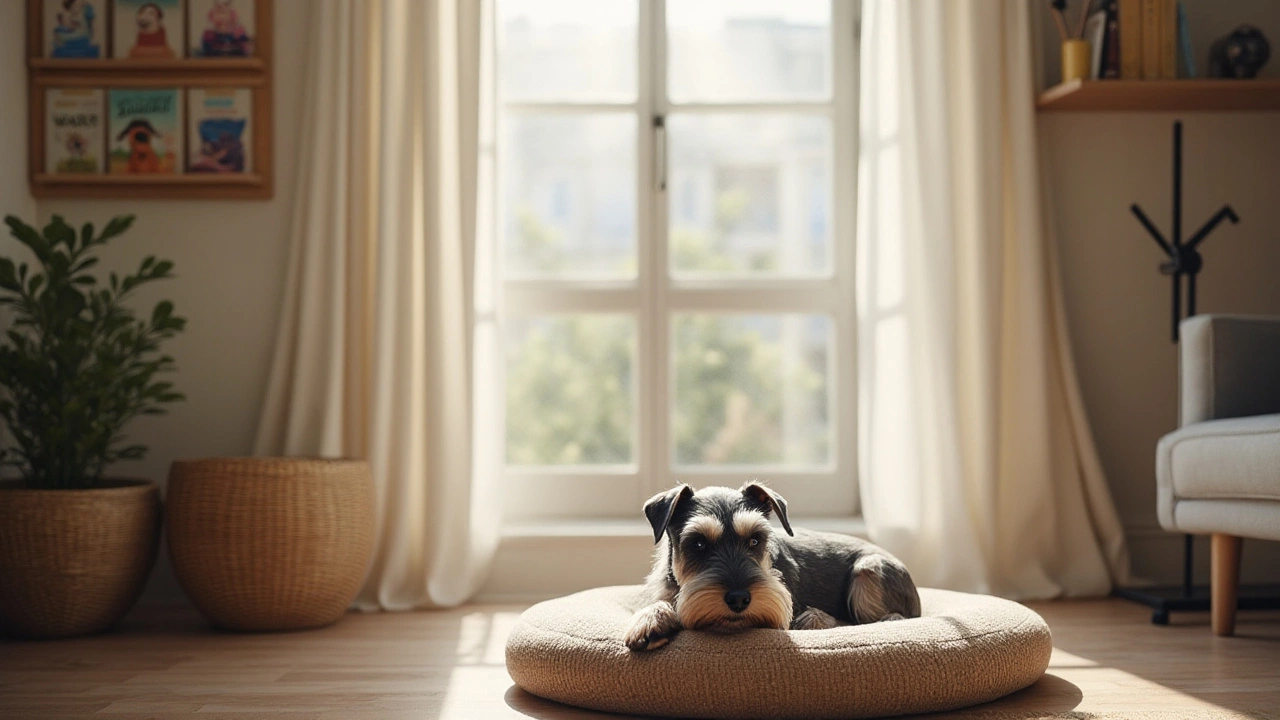
How Dogs Choose Their Beds
Dogs often have a way of letting their preferences be known, and when it comes to their sleeping arrangements, the shape of the bed can be more important than many owners might realize. The choices your dog makes about where and how to sleep can tell you a lot about their personality and habits. Whether it's a round bed for snuggling or a square bed for sprawling, each dog seems to have a personal preference rooted in instinct and comfort. Dogs are creatures of habit, preferring places that offer security and warmth. For instance, many dogs will turn in circles before lying down, a behavior believed to be inherited from their wild ancestors who would trample grass to create a comfortable, safe zone away from predators. This might explain why a cozy, enclosed shape like a round bed can be so appealing, mimicking those ancient circles.
When observing how dogs choose their beds, consider the size and shape of the bed in relation to the dog's own preferences for sleeping positions. Dogs that prefer to curl up might lean towards the nest-like comfort of a round bed, providing soft walls to lean against. On the other hand, dogs who enjoy stretching out might feel more at home on a square bed, which offers more space to spread out. Much like people have mattress preferences, dogs often show a preference for certain textures and fillings as well, with memory foam and soft fleece often being favored. This leads us to an understanding that a dog's choice in a bed is guided by a mix of comfort, the perception of security, and even certain learned behaviors from puppyhood.
"Understanding your pet's habits can offer clues to the right bedding choice. Dogs sleeping patterns are influenced by various factors, including the behavior of their owners," says Dr. Emily Porter, a well-regarded veterinarian. By watching whether your dog circles three times before lying down or sprawls on their back, belly up, you can gain insights into their specific nesting instincts and comfort needs.Choosing the perfect bed also involves considering the dog's age and health. Older dogs or those suffering from joint issues might prefer an orthopedic option within either round or square styles. These beds are often designed to alleviate pressure from sore joints. Additionally, smaller dogs often enjoy the cuddly corners of round beds that mimic the feeling of being sheltered. It's not just about aesthetics or matching the furniture; it's about empathy and understanding their unique canine preferences.
Tips on Choosing the Right Bed Shape
Picking the perfect bed for your dog is not just about aesthetics, but a decision that could impact their health and happiness. When pondering between a round or square bed, consider how your dog typically likes to rest. For instance, if your pup often curls into a tight circle without fail, a round bed might mimic their natural sleeping position. Many dogs find the security of a round bed comforting, as its shape naturally encloses them, much like a den—a place where many breeds instinctively prefer to sleep. This leads to a more restful slumber where they can feel snug and secure, contributing positively to their overall mood and behavior.
On the flip side, if your dog likes to stretch out or has an unpredictable sleeping style, a square bed might better suit their needs. Often praised for their roomy feel, square beds can accommodate fluctuating positions, giving more space for your dog to turn around or sprawl. It's a practical choice for larger breeds or dogs that run hot and need space to cool down, their bellies exposed to the breeze. If you've ever watched your pup stir in sleep, cycling between all kinds of positions, then the flexible dimensions of a square bed just might fit the bill.
Of course, there are practical details to consider too. Dog beds come in various materials, some of which offer orthopedic support—ideal for aging or arthritic dogs. It's worth noting that the bed's fabric should resist wear and tear if you have a cheeky chewer, and it should be easy to clean to manage the inevitable shedding or post-walk mud. Consider beds with removable covers, machine washable fabrics, or those designed with water-resistant linings to extend the bed's life and keep it hygienic.
Materials and Climate Considerations
Choosing a material that suits both your dog's needs and your lifestyle is crucial. Thicker materials can provide better insulation, which is fantastic for those cold winter months. Conversely, lighter fabrics might be preferable if you live in a warmer climate or have a dog with a dense coat. For allergy-prone pets, hypoallergenic materials can make a real difference—not just in their comfort, but in your peace of mind too. According to many veterinarians, ensuring comfort can significantly reduce anxiety levels, playfulness, and energy."The right bed can be a sanctuary for your dog, offering a place to feel safe and well-rested," according to Dr. Emily Hanson, a renowned veterinarian featured in Pet Health Magazine.
Don't forget about location—where are you planning to place the bed? If it's going in a corner, a round bed might save space and fit snugly. However, a square bed can be pushed neatly against a wall or fit into nooks in a room. These are subtle considerations that can make a bigger difference than you might first think.
Above all, it's about focusing on your dog's behavior and lifestyle. Observe them at rest, note their habits, and take into account any physical needs they might have. And remember, while the shape of a bed is important, it’s the love and care you put into choosing that matters the most to your furry companion. That’s the key to finding the best rest for your cherished pet. Whatever shape you decide on, make sure it speaks to your dog's unique charms and sets the stage for sweet dreams.
